#C. 4th century AD
Explore tagged Tumblr posts
Text

Roman Yellow Glass Conical Vase C. 4th century AD
Of inverted pyriform design, handless, with cylindrical neck and flaring, rolled lip. H. 14.5 cm.
#Roman Yellow Glass Conical Vase#C. 4th century AD#glass#roman glass#ancient glass#ancient artifacts#archeology#archeolgst#history#history news#ancient history#ancient culture#ancient civilizations#Ancient Rome#roman history#roman empire#roman art
101 notes
·
View notes
Text
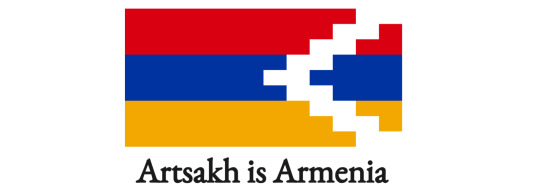
For those who are confused about the situation in Artsakh (part 1)
To anyone even remotely knowledgeable about the history of the region, the azerbaijani claims that Artsakh belongs or belonged to them, or that they are the natives of the land, sound not only incorrect but also hilariously pathetic. The earliest evidence of Artsakh’s ancient history dates back to the earliest stages of the Stone Age, specifically the Acheulean and subsequent periods (800,000 to 100,000 years ago). These include stone and bone tools found in the caves of Orvan-Msoz, Tsatsakhach, and Khoradzor. Excavations of settlements and tombs from the Bronze and Iron Ages (Stepanakert, Khojaly, Karkarjan, Amaras, Madagis, and the valleys of the Khachenaget and Ishkhanaget rivers) indicate that this area was part of the Kur-Araxes cultural system formed in the 4th-3rd millennia BC. The Kur and Arax are rivers in the Armenian Highlands; Arax is even considered the “mother river” of Armenia and is referred to as “Mother” in many Armenian poems and songs.
Artsakh was the northeastern boundary of the region where the Armenian people formed ethnically. This has been mentioned many times in the works of Strabo (64 or 63 BC – c. 24 AD, a Greek geographer, philosopher, and historian), Ptolemy (c. 100 - c. 170 AD, a renowned Greek geographer, astronomer, and mathematician), and many other non-Armenian geographers and historians. For over 3000 years, Artsakh has been inhabited by its natives, the Armenians.
You might ask, what do these historians write about the azerbaijanis? Well, nothing—because azeris did not exist back then and wouldn’t exist for at least the next 3000 years. How, then, could they have been the natives of the land?
Furthermore, aren’t azeris Muslim? In that case, how is it that right after Armenia adopted Christianity as its official religion—being the first nation to do so—many churches were built in Artsakh, not mosques, but churches? For example:
Gandzasar Monastery (4th century) and St. John the Baptist Church (1216-1238)
Dadivank (4th century) and Katoghike (9th-11th century)
Amaras Monastery (4th century)
St. George Church of Tzitzernavank (4th-5th century)
Gtichavank (4th-13th century)
Monastery of Apostle Yeghishe (Jrvtshtik) (5th century), Mataghis
Vankasar White Cross (5th century)
Kataro Monastery of Dizapayt and Holy Mother of God (5th century)
Mokhrenis Okht Drne Monastery (7th-17th century)
Kolatak St. Hakob Monastery (9th century)
Tsori Holy Savior (9th century)
Tsamakahogh St. Stephen (9th-10th century)
White Cross Monastery of Vank village, Hadrut (10th century)
Desert Monastery of Elisha Kusi, Chartar (12th century)
St. George Church of Jankatagh (12th century)
Khotavank (12th-13th century)
Holy Mother of God Nuns' Monastery of Karvachar (12th-13th century)
St. Savior Church of Poghosagomer (12th-13th century)
Shoshkavank Holy Mother of God of Msmena (13th century)
Horeka Monastery (13th century)
Kavakavank (14th century)
And many, many more. It pains me to tears to say that these churches, along with hundreds of others, are being destroyed by azeris to wipe out the evidence that Armenians lived there, pushing their false narrative that they are the natives of the land. Since the 2020 war, azerbaijani forces have destroyed over 570 Armenian cultural sites, with 3 to 4 monuments being demolished weekly—not to mention the desecration of both old and new Armenian graves.
So, the next time an azeri tries to argue that they are the natives of Artsakh and Armenia, just laugh at their faces. I’m sure I’ve got socks in the back of my drawer that are older than their “nation.”
#break the chain of ignorance#feel free to fact check what you read#history#artsakh is armenia#artsakh#armenia#world politics#world history#azeri crimes#turkish crimes#stop the genocide#armenian culture
197 notes
·
View notes
Text

"Farnese Hercules (detail, with golden apples of the Hesperides)" by Glykon. Reproduced from the original by Lysippos. c. 216 AD (4th century BC for original). Museo Archeologico Nazionale, Naples.
339 notes
·
View notes
Text
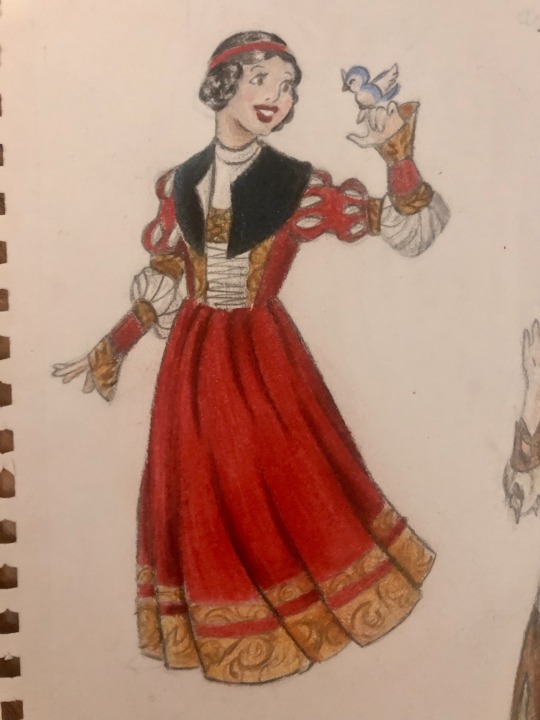
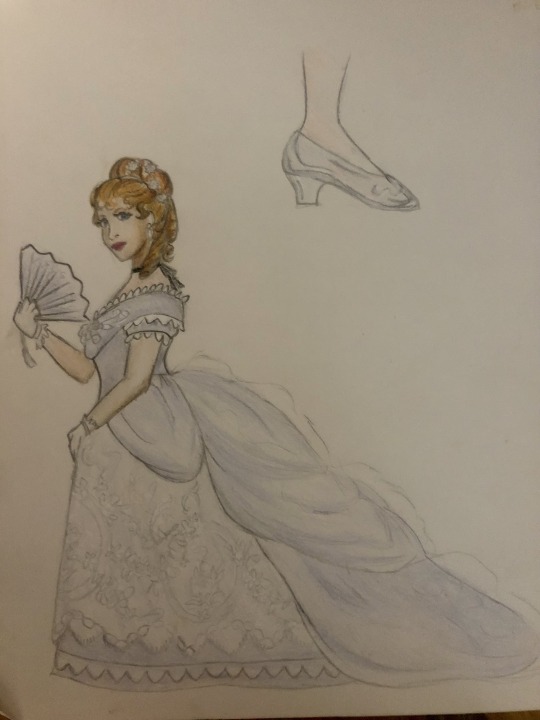
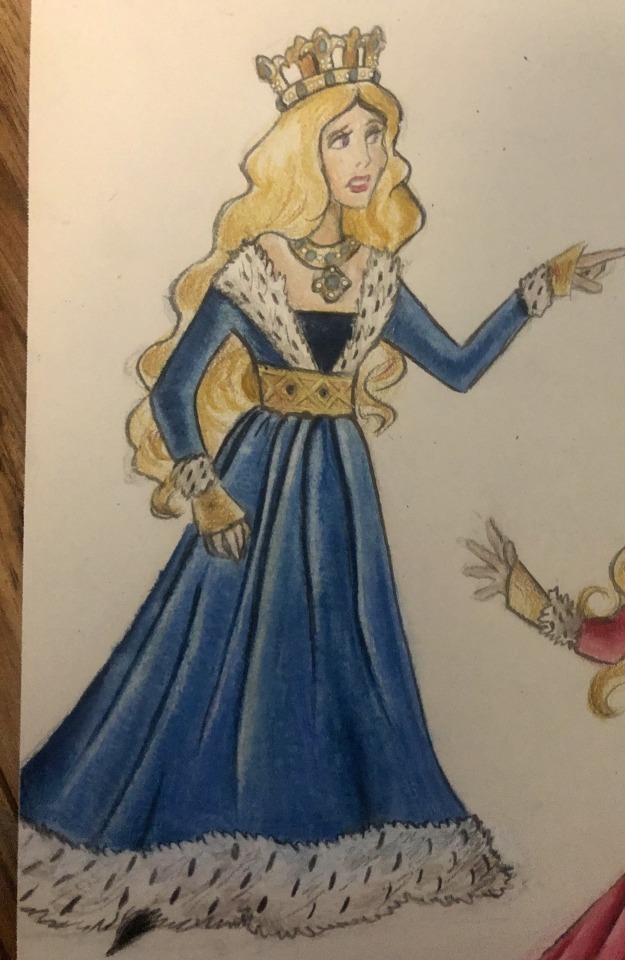
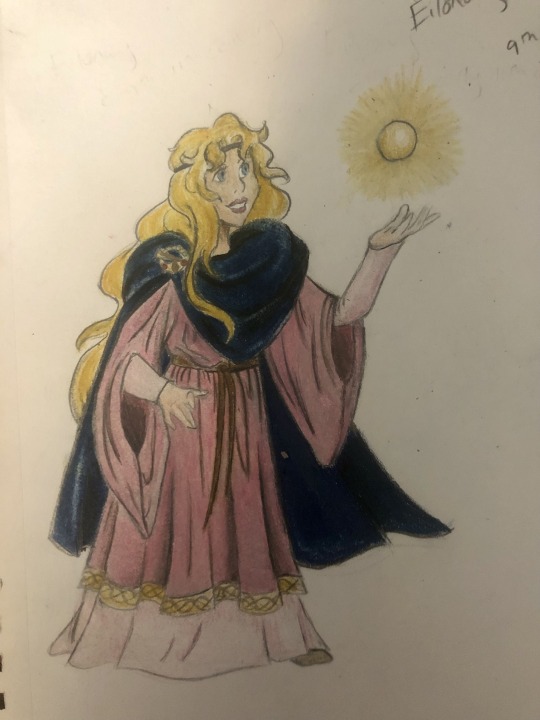
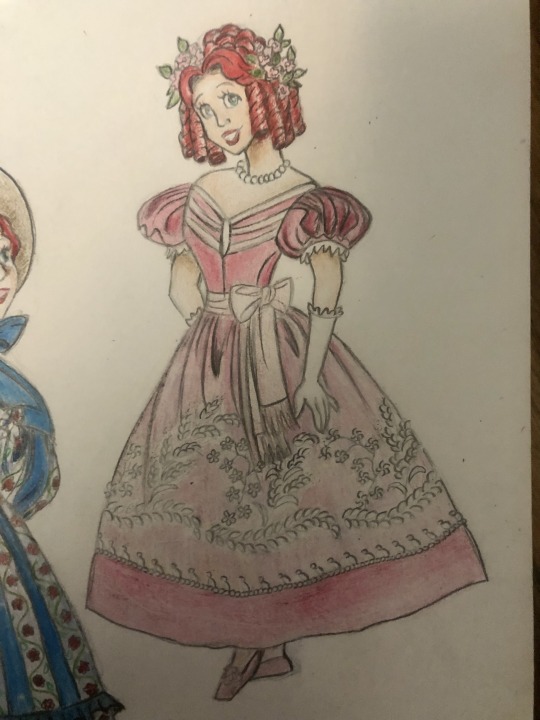
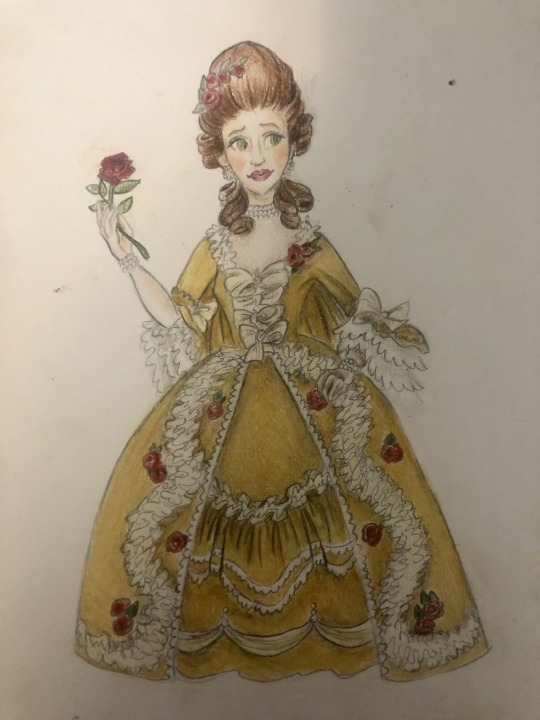
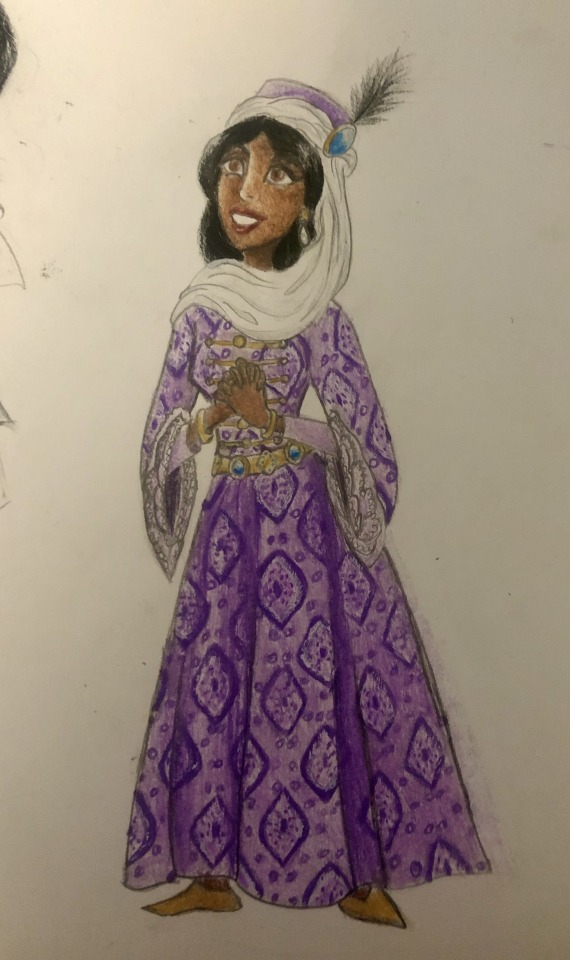
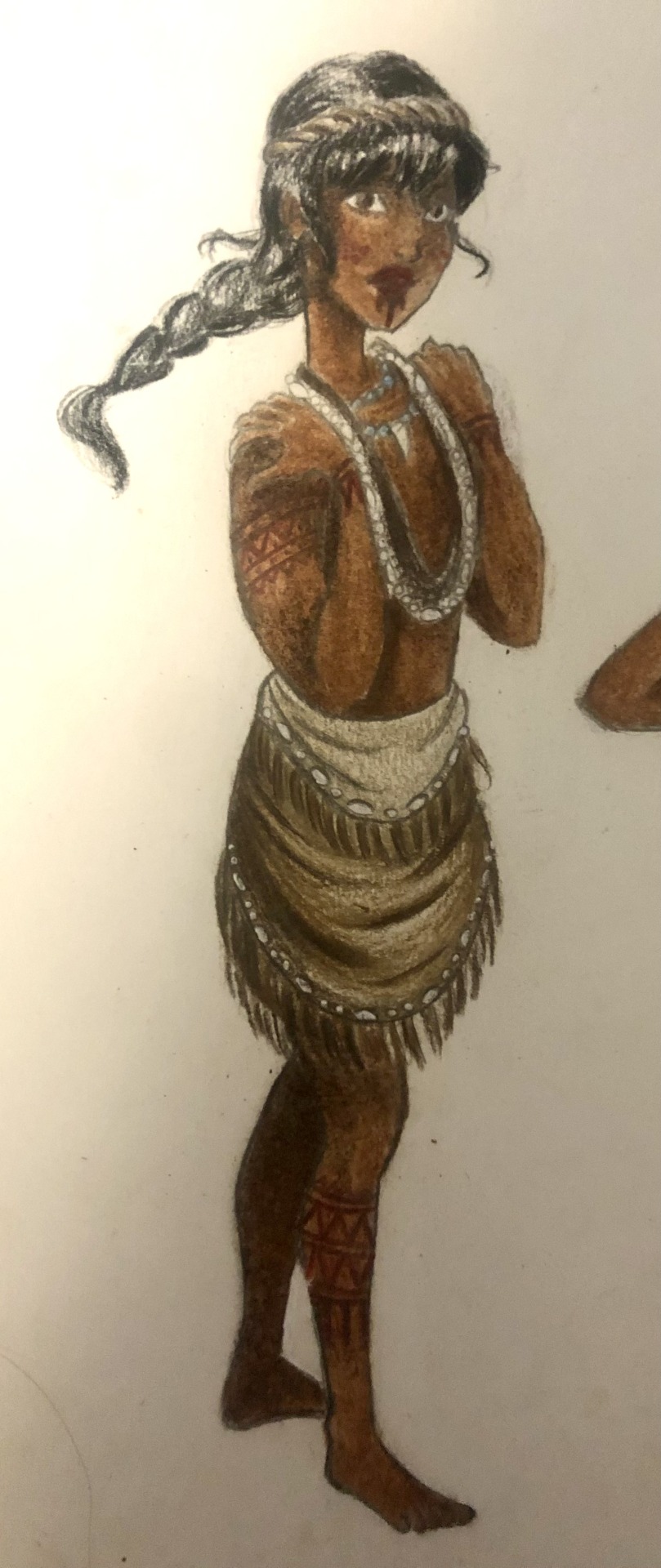
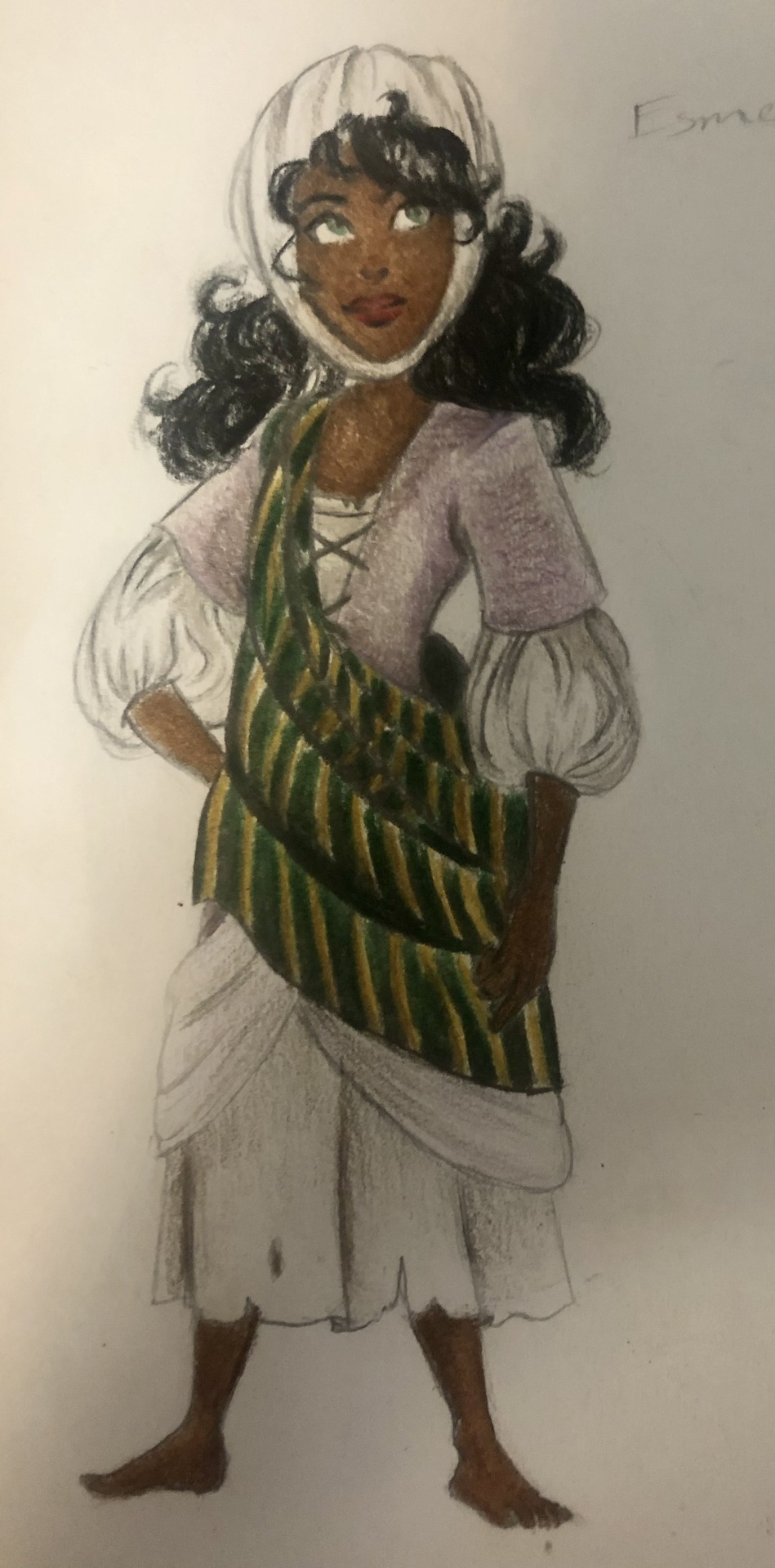
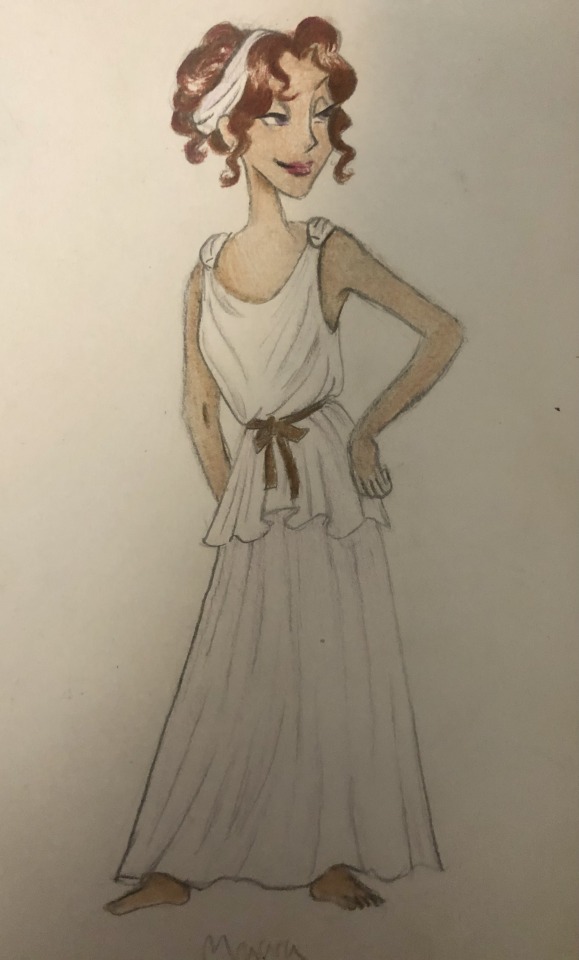
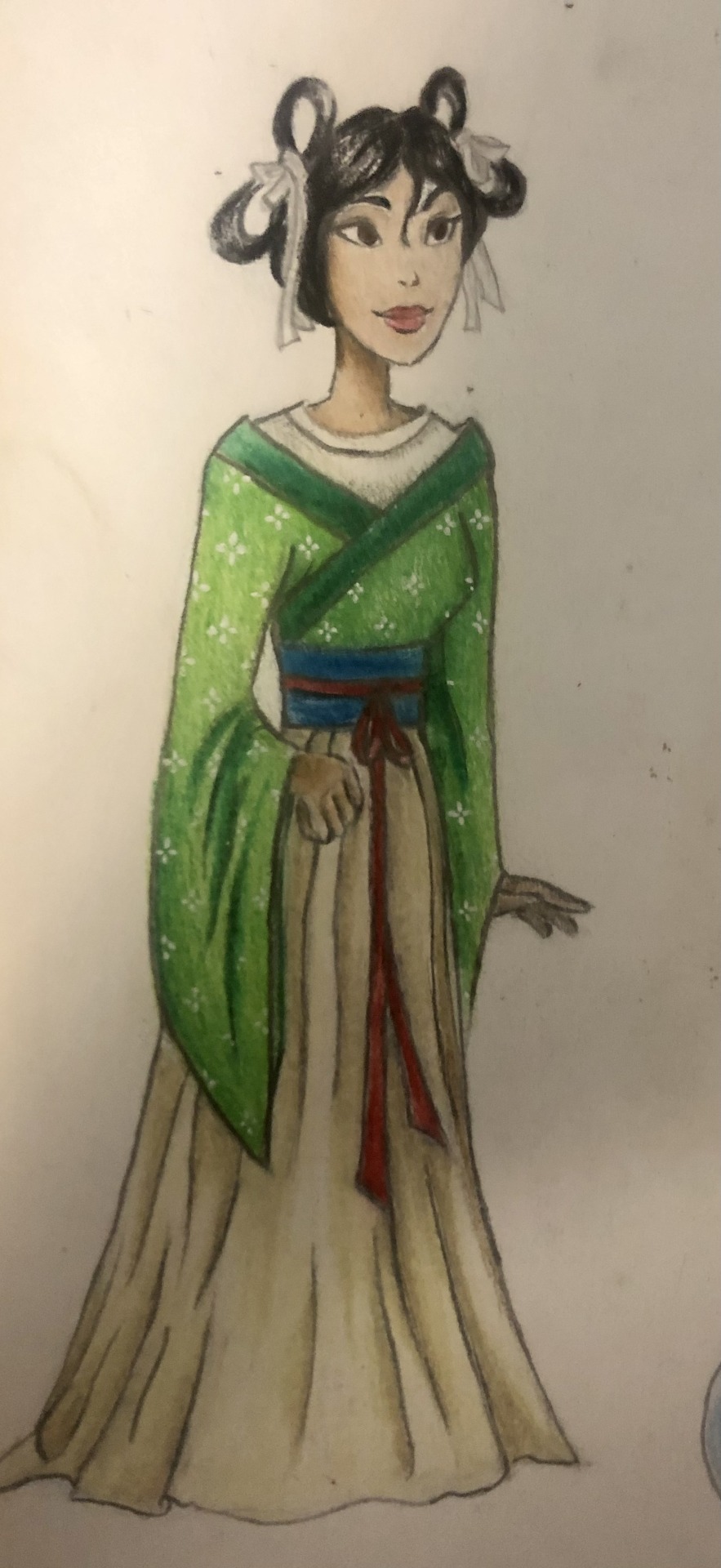
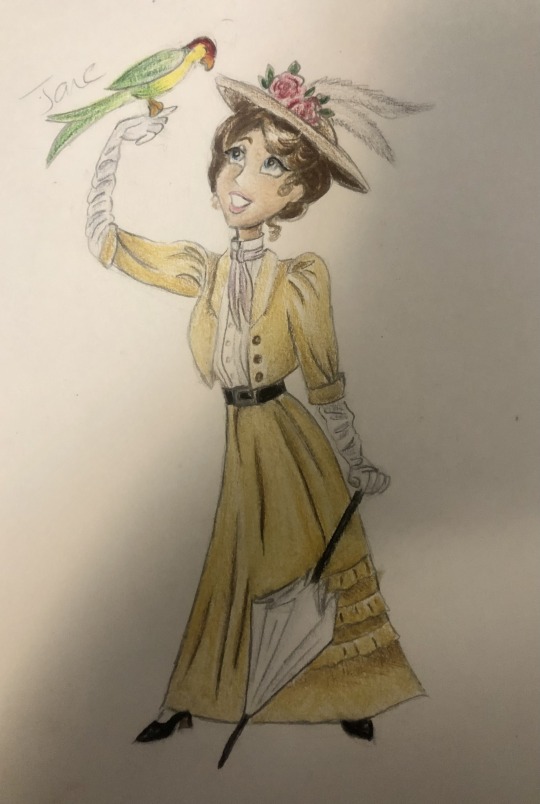
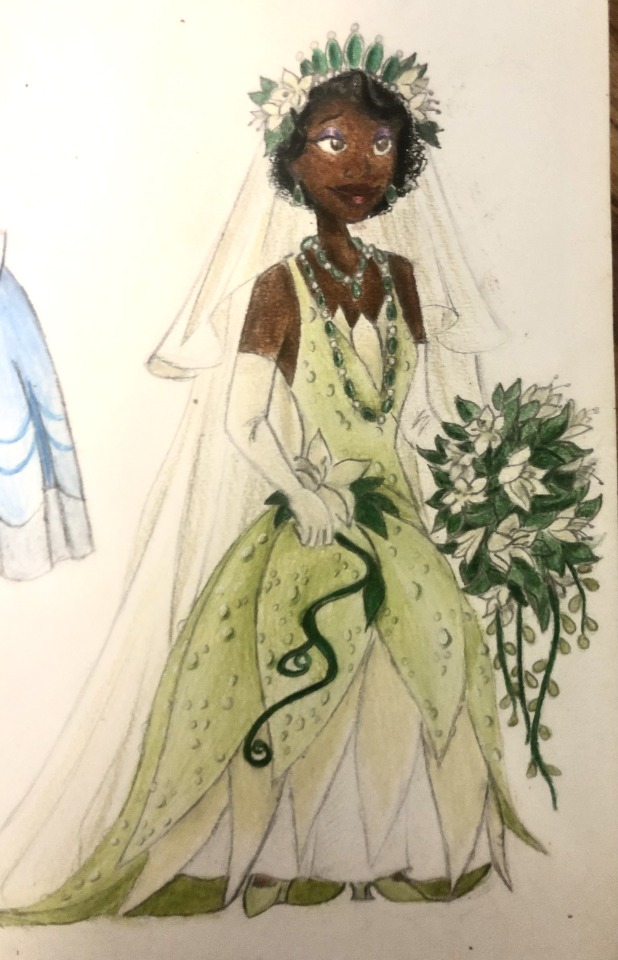


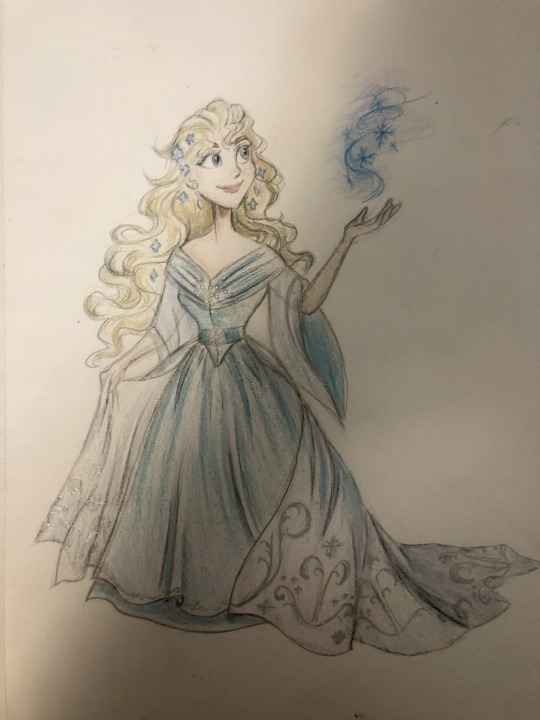
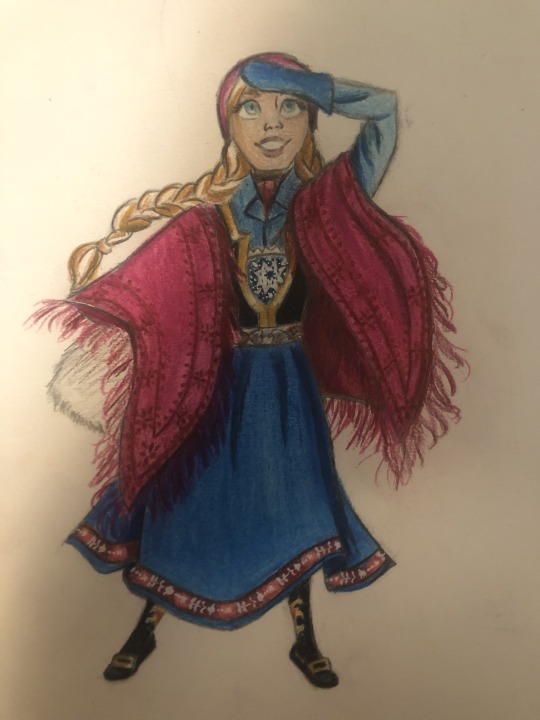

Thought I’d do a little art throwback with my own historically accurate (well mostly) takes on Disney princesses and heroines, which I did from 2021 to 2022! Included in this series are:
Snow White - early 16th century Germany (then part of the Holy Roman Empire)
Cinderella - late 1860s-early 1870s France
Aurora - mid 15th century France
Eilonwy - 8th-10th century (present day) Wales
Ariel - 1830s Mediterranean Europe (maybe Italy)
Belle - 1760s-1770s France
Jasmine - 16th century Arabian Peninsula during the Ottoman Empire
Pocahontas - 1607 Virginia, (present day) United States of America
Esmeralda - 1480s France (Romani garb)
Megara - Classical period of Ancient Greece (c. 5th-4th centuries BCE)
Mulan - Wei Dynasty China (386-535 AD)
Jane - 1900s England
Tiana - late 1920s New Orleans, Louisiana, USA
Rapunzel - 1790s-1800s Germany
Merida - 10th-11th century (present day) Scotland
Elsa - late 1830s-early 1840s Norway
Anna - same period as Elsa (duh)
Moana - ancient Polynesian Islands (c. 1st century BCE)
I had so much fun drawing these, as well as doing the research for each one! I actually drew most of the outfits each one wears (in their first movies) but they're waaaaay down further in my blog.
I'm planning to do a digital redo of these someday, as well as do my own historical spins on other characters I haven't done yet.
Which one is your favorite?
Commissions info
#my art#angie's scribbles#disney#disney princess#disney princesses#disney heroines#disney girls#disney ladies#historical disney#historically accurate disney#historical fashion#snow white#snow white and the seven dwarfs#snow white 1937#cinderella#cinderella 1950#princess aurora#aurora#sleeping beauty#sleeping beauty 1959#eilonwy#princess eilonwy#the black cauldron#ariel#the little mermaid#the little mermaid 1989#belle#beauty and the beast#beauty and the beast 1991#jasmine
280 notes
·
View notes
Text

The Ladby ship anchor, probably 10th century
It is the only danish burial in a vikingship. The ship and its owner are buried in Ladbyhøj together with 11 horses and at least 4 dogs. It is located close to Kerteminde on Funen, Denmark.
When iron (around 4th century BC, but iron was already known as a material before then, c. 3000-2700 BC) was introduced for the construction of anchors, an improvement was made by adding teeth or ‘flukes’ to secure them to the bottom. This is the iconic anchor shape best known to non-sailors.
This shape was already used in ancient times. The Roman Nemi ships from the 1st century AD used this shape. The Viking ship here used such an iron anchor, which was fitted with a wooden shaft attached perpendicular to the shaft and the flukes so that the flukes touched the ground at a suitable angle to hook or penetrate and weighed around 20kg.
64 notes
·
View notes
Photo

Jade in Ancient China
Jade (nephrite) was regarded as the most precious stone in ancient China, and it symbolised purity and moral integrity. Prized for its durability and magical qualities, the stone was laboriously carved and polished into all manner of objects from jewellery to desk ornaments. Jade was especially used for ritual objects such as the bi disc and zong (cong) tubes, both of which are of unknown function.
Mining & Working
Jade, in the case of China, refers to the mineral nephrite, the hardest and rarest hard stone. There is another mineral with that name, jadeite, but this was unknown to the Chinese prior to the 18th century CE when it was imported from Burma. Nephrite comes in various shades of green and other colours depending on the percentage of iron content in the stone and other trace elements. The principal source was in the Xinjiang region but it is likely others sources, once exhausted, have disappeared from the historical record. The Khotan region of Central Asia is another known source of the stone in antiquity. Jade was first used from c. 6000 BCE and green long remained the preferred colour, but during the 5th and 4th century BCE there was a fashion for white jade with a brown tinge and again in the 1st century BCE when a pure white jade became available from central Asia following expansion under the Han Dynasty (206 BCE - 220 CE).
Excavated from mountains and picked up in riverbeds - and so known as 'the essence of heaven and earth', the stones could not be cut by a metal knife, and so they were shaped using a cord and sand acting as an abrasive before being more precisely carved using a drill and then polished. Jade is a hard stone and working it with primitive tools would have required a great deal of time and effort, which, of course, only added to its value. Early pieces have engraved linear designs, but over the centuries a more sophisticated appearance was achieved by carving the jade so that the object had many contours, niches, and points which were highly polished.
Continue reading...
49 notes
·
View notes
Text
Isolation
Fandom: Hetalia
Characters: Y/n, Denmark. Mentions of Russia, Iceland, and Norway.
Warnings: Reader uses she/her. Requests for Hetalia stories are open
🌍Hetalia belongs to Hidekaz Himaruya🌍
Sometimes in the middle of the 19th century...
"(Y/n), this is getting ridiculous! You have been stuck in your room for the past 3 centuries! You need to start going outside and meeting new people." The northern country's boss, who was an elderly and exhausted man, said in exasperation. The man was meant with silence at first, but the said country opened the door just enough for the man to see half of her face.
"That's not true! I do go outside. Just yesterday I was in the garden!"
"You know that's not what I meant. I meant for you to go into the world again and make allies. You have been isolated for so long, and the neighboring countries would like to make proper trade deals again-"
"No! I am not going outside or meeting anyone!" (Y/n) yelled back, watching as the man facepalmed, trying to calm down. This was the 4th time they had the conversation this week.
"Please, nobody will hurt you. The countries are very nice and kind."
"What about that silver haired one?! You know the one with the creepy smile and kept telling me to 'become one with him?!" (Y/n) panicked as she remembered the man. The last time she saw Russia was exactly 300 years ago. He scared her enough to go into a complete shut down.
"I don't and can't risk it. Besides! Everything I need, I have here." The country tried to reason with her boss. The man was about to start lecturing her again, when an assistant of the country ran towards them, panicking ad he held a piece of paper.
"Miss (C/n)! We have got mail today! It says that a country will visit us tomorrow, they already set sails and everything!"
"What?!" The woman asked as she got out of her room.
"What do you mean? Give me that paper, please." The assistant handed her boss the paper and backed away a little as the duo read it.
'Dear (C/n),
my ship already set sail and we will be arriving at your place in about three days! I figured that this surprise visit will make it easier for us to reconnect! Haven't seen you for the past 300 years, my dude... Anyway, my greatness will bless your place very soon and we can work! Prepare some beer and food to celebrate this occasion.
Signed by the king of Northern Europe,
Denmark'
"King of Northern Europe?! I didn't know he raised to that status." (Y/n) muttered, vaguely remembering Denmark from her memory. She didn't realize she missed out on so much. Her boss glanced at her and then looked back at the assistant.
"Well then, prepare everything they need. We will host our guests witht he finest food we have."
"What?! Why?! Can't we tell them to leave?" (Y/n) protested as she watched the assistant leave, but shut up when she saw the man give her a strict look.
"(C/n), I know you don't like to hear it, but times are changing. Your isolation will not help you or your people in the long run. You will eventually need allies to trade with. Please just try opening up a little, if you really don't like it, you can reject Denmark as a possible ally. I won't force you to leave your room anymore." Surpringly, the man had a much softer voice now. (Y/n) looked at him for a moment, thinking over his words before slowly nodding her head.
"Alright..." The man's eyes widened in surprise and then smiled at her softly.
"Chin up, (C/n). Not everyone is Russia." He joked a little, patting her back a little.
"R-right..."
The next day (Y/n) woke up earlier than she was told. The night prior anxiety has haunted her over talking to another country again.
"It will be ok..." She muttered to herself while playing with the hem of her military uniform. The country was standing in front of her boss's desk as the man was sitting on his chair. The office was silent for a moment as (Y/n) looked away from the door and at her boss.
"You think they are late-"
"Woo-hoo! The king of Northern Europe is here to make the day better!!" (Y/n) and her boss flinched at the loudness as the door slammed open, revealing the Danish country. (Y/n) looked at the blonde man for a moment, surprised how he barged in.
'Right... he was always loud and brash. Surprisingly enough...he didn't change much physically.' (Y/n) thought, observing the grinning Dane. Same blonde hair, in the same style, same blue eyes, same loud personality, just that he is taller.
"(C/n)!!! I didn't see you in so long!! You got tall, but not as tall as me!!" The Dane yelled, pulling the girl into a hug. She was frozen for a moment, then turning red in embarrassment.
"What is wrong with you?! You can't hug people at random!" (Y/n) yelled as the Dane laughed.
"You are still as shy as you were- Ow!" Denmark stopped laughing and let the shorter country go as he felt someone hit his head. Looking back, the duo saw Denmark's boss glaring at the country before turning to look at (Y/n).
"I am very sorry about him. Thank you for hosting us even though we informed you late." The older man said apologetically as her boss chimed in. The duo watched the two men talk as (Y/n) sighed, already feeling drained from so many people. Denmark looked away from them and at her with a huge smile.
"Come on! I want to see what you do for fun around here." Denmark said while grabbing her hand before she could protest, dragging her out of the room.
"Your place is so much colder than mine! I am freezing my balls off." Denmark said, breaking the awkward silence. (Y/n) looked at him in confusion, ignoring the weirded out stares they were receiving from other people walking by.
"Denmark, you know I am located far more north than you, with a lot of snow. What did you expect?"
"I didn't expect it to be this cold!" The Dane pouted as he kept on hugging himself, causing (Y/n) to sigh in defeat.
"You are as much of an air head as you used to be back in the day." (Y/n) rolled her eyes as they walked down the road, the girl showing him different small shops where he could eat of buy clothes.
"No offense, (Y/n), but this is all kind of boring. Don't you have something cooler to show me?"
The girl held back another sigh as she looked at the blonde.
"We have restaurants, ice rinks, and playgrounds-"
"Do you have any placed that sell beer?" Denmark suddenly asked, looking at the girl with puppy eyes. She had to pause for a moment, the look was pretty cute on him.
'Same old Dane...' (Y/n) thought, a part of her happy he kept the same personality for so long. She then snapped herself back to reality, realizing the country was still waiting for an answer.
"What is that?" (Y/n) asked.l, never having heard of that one.
"You don't know what beer is?! It's just the most delicious drink in the world!" Denmark yelled, looking offended for a moment.
"Damn... you really did miss out on a lot. That's so sad." The blonde fake-sobbed as (Y/n) blinked for a moment.
"But, don't worry! Your good, old friend Denmark is here to introduce and teach you about the new things! I will even bring you books of my writers, you will love those stories they made. And we also can make some..." The country kept on rambling before (Y/n) cut him off.
"Wait, you will come back? How do you know I will let you come back? I have been isolated for 300 years by now, why would I change that?" (Y/n) challenged him. Denmark stopped talking and blinked at her, confused by all the questions.
"Of course I want to come back. You were one of closest friends back in the day, I missed you." The taller answered, surprising (Y/n) with how genuine he was.
"I was pretty bummed out when you left, and I want you to open up again. The world has now many new interesting countries to meet. They are not as interesting as me, of course, but I am sure you will like them."
(Y/n) kept silent as Denmark finished his speech, she really had nothing to tell him in return. Sure, her and Denamrk were close back then, but she never expected he would miss her. Much less admit it.
"You... you don't have to do it all at once, you can start off with just the northern parts of Europe. If you want, I can help you. I am pretty close with the guys now." Denmark said softly, offering her his hand.
"You are?"
"Yep! Especially with Norge and Iceland, they will appreciate the coldness here when they visit one day." The blonde joked, still holding out his hand.
"What do you say?"
(Y/n) kept quiet, still not comfortable with the idea of letting new people in.
'What if they will backstab me and vage a war. My military isn't as strong, and I have basically no experience in fighting.' (Y/n) gulped, looking up at Denmark now.
'But... Denmark always kept his promises to me, and my people might end up suffering in the future if I don't start doing something.'
Sighing, she nodded her head and put her hand in Denmark's.
"Fine. But don't leave me alone with them for now."
"Of course! You have a promise there!" The Dane grinned as the shook hands.
"By the way, you said I never changed? Did you think of me all this time?" The Dane teased her. (Y/n), oblivious to the teasing, nodded her head.
"Well, you were my closest friend back in the days. So of course I would think of you from time to time." She said flatly.
"Ah... You really did..." Denmark blushed at her words, a soft smile appearing on his face.
Days later, (Y/n) and her boss were at the port, watching the Danish ships sail away. Denmark was waving back at them as he yelled.
"I will be visiting you soon! I will bring Norge and Iceland with me next time!! And I will bring beer. There is no way to live without it-"
His boss bonked him on the head before he could finish his sentence. The older man was clearly embarrassed by his behavior.
"You agreed to meet 2 new countries?" Her boss asked her in surprise.
"Norway and Iceland aren't new to me... Denmark used to mention them a lot when we were younger." (Y/n) shrugged her shoulders, still keeping her eyes on the ship Denmark was on.
"And besides, you told me to open up more... Maybe it won't be so bad." (Y/n) said, not noticing the relieved smile on the man's face.
"Miss (C/n)! Mr. (B/n)! We got another letter!" The two looked at a man running their way.
"It's from Mr. Russia! He wants to visit us!"
As hee boss went to check on the letter, (Y/n) felt her soul leave her body.
'Why did I agree to this?'
#hetalia#hetalia axis powers#hetalia world stars#hetalia world series#hetalia x you#hetalia x reader#hetalia denmark#hetalia russia
129 notes
·
View notes
Text
you know about musical tuning right? harmonics? equal temperament? pythagoras shit? of course you do (big big nerd post coming)
(i really dont know if people follow me for anything in particular but im pretty sure its mostly not this)
most of modern western music is built around the 12-EDO (12 equal divisions of the octave, the 12 tone equal temperament), where we divide the octave in 12 exactly equal steps (this means that there are 12 piano keys per octave). we perceive frequency geometrically and not arithmetically, as in that "steps" correspond to multiplying the frequency by a constant amount and not by adding to the frequency
an octave is a doubling of the frequency, so a step in 12-EDO is a factor of a 12th root of 2. idk the exact reason why we use 12-EDO, but two good reasons why 12 is a good number of steps are that
12 is a nice number of notes: not too small, not too big (its also generally a very nice number in mathematics)
the division in 12 steps makes for fairly good approximations of the harmonics
reason 2 is a bit more complex than reason 1. harmonics are a naturally occurring phenomena where a sound makes sound at the multiples of its base frequency. how loud each harmonic (each multiple) is is pretty much half of what defines the timbre of the sound
we also say the first harmonics sound "good" or "consonant" in comparison to that base frequency or first harmonic. this is kinda what pythagoras discovered when he realized "simple" ratios between frequencies make nice sounds
the history of tuning systems has revolved around these harmonics and trying to find a nice system that is as close to them while also avoiding a bunch of other problems that make it "impossible" to have a "perfect tuning". for the last centuries, we have landed on 12 tone equal temperament, which is now the norm in western music
any EDO system will perfectly include the first and second harmonics, but thats not impressive at all. any harmonic that is not a power of 2 is mathematically impossible to match by EDO systems. this means that NONE of the intervals in our music are "perfect" or "true" (except for the octave). theyre only approximations. and 12 steps make for fairly close approximations of the 3rd harmonic (5ths and 4ths), the 5th harmonic (3rds and 6ths) and some more.
for example, the 5th is at a distance of 7 semitones, so its 12-EDO ratio is 2^(7/12) ~= 1.4983, while a perfect 5th would be at 3/2=1.5 (a third harmonic reduced by one octave to get it in the first octave range), so a 12-EDO fifth sounds pretty "good" to us
using only 12-EDO is limiting ourselves. using only EDO is limiting ourselves. go out of your way, challenge yourself and go listen to play and write some music outside of this norm
but lets look at other EDO systems, or n-EDO systems. how can we measure how nicely they approximate the harmonics? the answer is probably that there is no one right way to do it
one way we could do it is by looking at the first k harmonics and measuring how far they are to the closest note in n-EDO. one way to measure this distance for the rth harmonic is this:

adding up this distance for the first k harmonics we get this sequence of measures:


(this desmos graph plots this formula as a function of n for k=20, which seems like a fair amount of harmonics to check)
the smallest this measure, the "best" the n-EDO approximates these k harmonics. we can already see that 12 seems to be a "good" candidate for n since it has that small dip in the graph, while n=8 would be a pretty"bad" one. we can also see that n=7 is a "good" one too. 7-EDO is a relatively commonly used system
now, we might want to penalize bigger values of n, since a keyboard with 1000 notes per octave would be pretty awful to play, so we can multiply this measure by n. playing around with the value k we see that this measure grows in direct proportion to k, so we could divide by k too to keep things "normalized":

plotting again, we get this


we can see some other "good" candidates are 24, 31, 41 and 53, which are all also relatively commonly used systems (i say relatively because they arent nearly as used as 12-EDO by far)
increasing k we notice something pretty interesting


(these are the same plots as before but with k=500 and k=4000)
the graph seems to flatten, and around 0.25 or 1/4. this is kinda to be expected, since this method is, in a very weird way, measuring how far a particular sequence of k values is from the extremes of an interval and taking the average of those distances. turns out that the expected distance that a random value is from the extremes of an interval it is in is 1/4 of the interval's length, so this is not that surprising. still cool tho
this way, we can define a more-or-less normalized measure of the goodness of EDO tuning systems:


(plot of this formula for k=20)
this score s_k(n) will hover around 1 and will give lower scores to the "best" n-EDO systems. we could also use instead 1-s_k(n), which will hover around zero and the best systems will have higher scores
my conclusion: i dont fucking now. this was complete crankery. i was surprised the candidates for n this method finds actually match the reality of EDO systems that are actually used
idk go read a bit about john cage and realize that music is just as subjective as any art should be. go out there and fuck around. "music being a thing to mathematically study to its limits" and "music being a meaningless blob of noise and shit" and everything in between and beyond are perfectly compatible stances. dont be afraid to make bad music cause bad music rules
most importantly, make YOUR music
76 notes
·
View notes
Text

Cleopatra the Alchemist (Greek: Κλεοπάτρα; fl. c. 3rd century AD) was a Greek alchemist, writer, and philosopher. She experimented with practical alchemy but is also credited as one of the four female alchemists who could produce the philosopher's stone. Some writers consider her to be the inventor of the alembic, a distillation apparatus. She appears to have been active in Alexandria in the 3rd century or 4th century A.D. She is associated with the school of alchemy typified by Mary the Jewess and Comarius. These alchemists used complex apparatus for distillation and sublimation.
Art by Sato Futaba author of the historical mangas "Utae, Erinna!" and "Anna Komnene"
#ancient rome#roman egypt#alchemy#ancient alchemist#women alchemist#women scientists#women's history#women in history#women at work#Cleopatra#Cleopatra the alchemist#historical person#historical art#manga#Sato Futaba
8 notes
·
View notes
Text



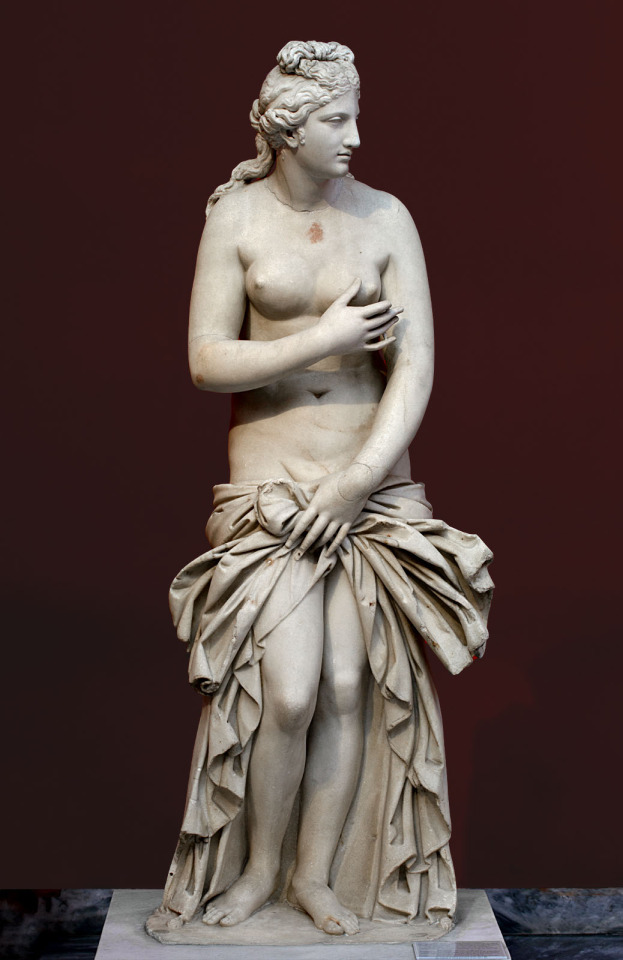
The Pudic Venus of the classical world are the representation of the goddess Aphrodite, naked or semi-naked, at the precise moment of modestly covering her "shame" or private parts, as if she had been surprised at the time of bathing or dressing.
It was one of the most typical artistic motifs of Classical Antiquity.
Let's see some examples:
-Photo 1, The Venus de Medici, Roman copy 1st c. BC, from the sculpture of Praxiteles from the 4th century BC
-Photo 2, Venus Capitolina, copy of the 2nd century from an original sculpture by Praxiteles. Capitoline Museums, Vatican.
-Photo 3, Aphrodite or Venus of Cnido, also called Altemps or Ludovisi. Work of the Greek author Praxiteles made around the year 360 B.C. Altemps Palace Museum, Rome.
-Photo 4, Aphrodite of Syracuse. Roman copy of the 2nd century AD. from a Greek original of the 4th century B.C.; neck, head and left arm are restorations by Antonio Canova. Found in Baiae, southern Italy. National Archaeological Museum, Athens.
124 notes
·
View notes
Text
The idea that the Spanish Reconquista was "driving away the Muslim Invaders" is kind of funny when you consider the timescales involved.
Most of Iberia fell to the Umayyads between 710 and 780 AD. Iberia had been Christianized in the early 4th century, so that is about 400-450 years as Christian territories (a lot of that with the Visigoths' Aryan Christianity). The majority of the Reconquista happened between about 1100 and 1300, so that is about 400-600 years as Muslim territories.
Granada was finally captured in 1492, approximately 780 years after it had first been captured by the Umayyads. Not only is that almost twice as long as it had been nominally Christian, it is approximately 80 years longer than Granada had been Roman (c 220 BC to c480 AD)!
109 notes
·
View notes
Text
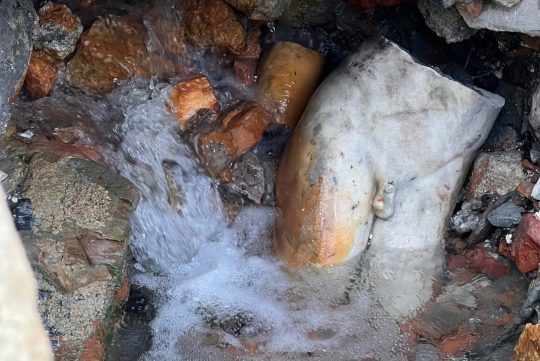
Statue of Apollo 'Lizard Killer' Found at Etruscan and Roman Spa
Archaeologists have found a marble statue of Apollo Sauroctonos, also known as the “Lizard Killer”, during excavations of an Etruscan and Roman spa at San Casciano dei Bagni in Tuscany.
The spa is fed by geothermal springs, which the Etruscans used to supply water at a mean temperature of 42 °C (108 °F) to the complex of Balnea Clusinae.
According to legend, the site was founded by Porsenna, an Etruscan king of Chiusi, although archaeologists suggest that the complex was built by the Etruscans in the third century BC.
During the Roman period, the spa became a popular attraction for the therapeutic benefits, with notable figures such as Caesar Augustus being a frequent visitor.
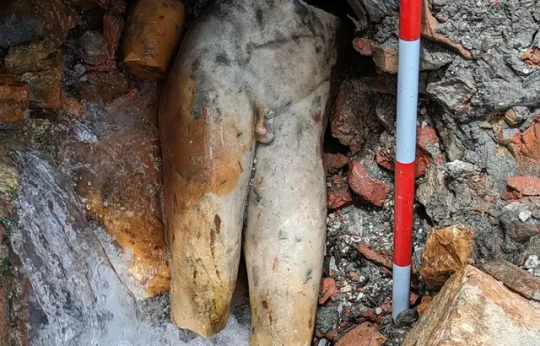

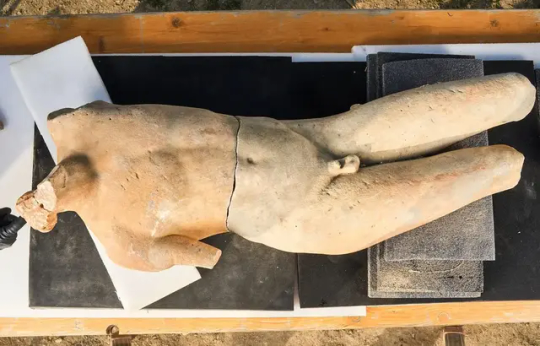
Archaeologists have found fragments of a life-sized Apollo Sauroctonos statue on the edge of the Great Bath, which are Roman copies of a bronze statue created by the Greek sculptor Praxiteles, the most renowned of the Attica sculptors of the 4th century BC.
Example copies generally date from the 1st to 2nd century AD and depict Apollo in his youth about to catch a lizard climbing up a tree. The Roman poet, Martial, wrote an epigram about the Apollo Sauroctonos statues “Spare the lizard, treacherous boy, creeping toward you; it desires to perish by your hands.”


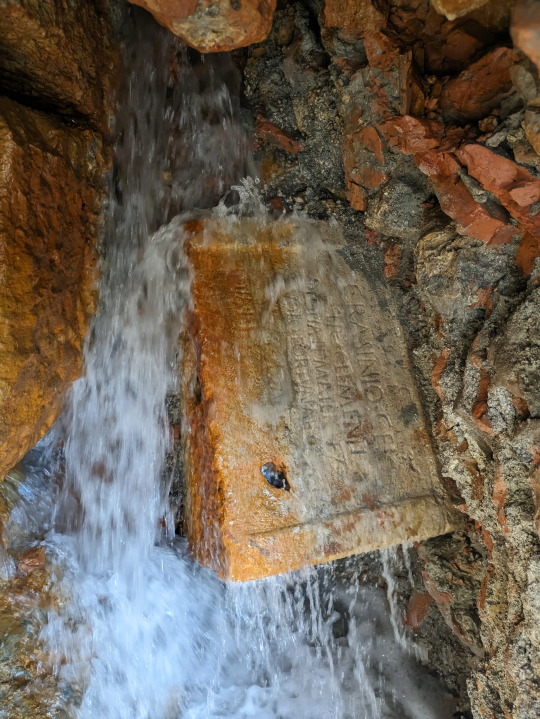
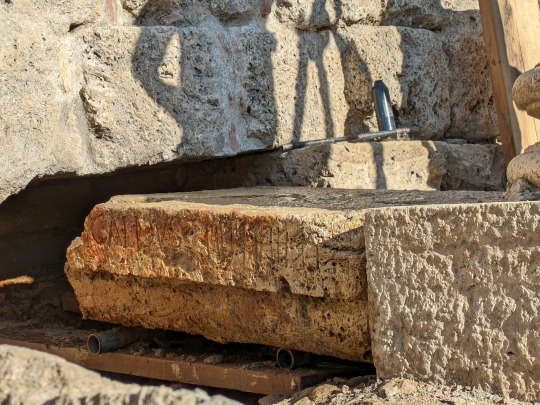
Apollo, revered as the deity associated with healing and ailments, received votive offerings from petitioners seeking remedies for their afflictions. Additionally, the depiction of Apollo hunting a lizard can be associated with ophthalmology, as lizards were considered a key ingredient for curing eye complaints.
Excavations also uncovered a travertine votive altar with a bilingual inscription in Latin and Etruscan from the 1st century AD, indicating the ongoing influence of Etruscan culture well into the Roman Imperial Era.
By Mark Milligan.
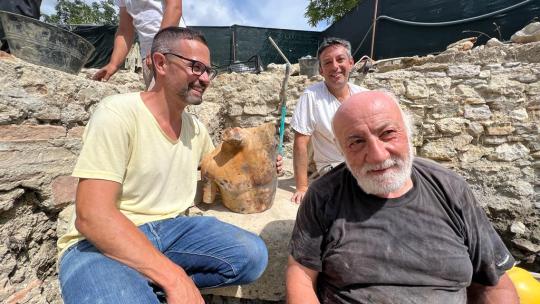


#Statue of Apollo 'Lizard Killer' Found at Etruscan and Roman Spa#San Casciano dei Bagni in Tuscany#statue#sculpture#ancient artifacts#archeology#archeolgst#history#history news#ancient history#ancient culture#ancient civilizations#roman history#roman empire#roman art#ancient art
129 notes
·
View notes
Text





Aphrodite Paphia (of Paphos)
A conical basalt stone from the [pre-Greek] Sanctuary of Aphrodite, Palaepaphos site, Cyprus [birth of Venus' from Sea foam site]
Different populations of Cyprus worshiped a female divinity from as early as the Chalcolithic period (3900–2500 BC). The cult-site is active through the Late Bronze Age (c.1200 BC) to the end of the 4th century AD [Phoenician, Archaic, Classical, Hellenistic and Roman]
Valid scientifically evolution of Astarte (Mesopotamian) or Ishtar (Akkadian), great goddess of ancient Middle East.
The deity's representation (from recovered archeological relics) was of steatopygian female form (fertility figures)
Old Paphos (Palaepaphos), was settled by Greeks in the Mycenaean period, ca. 1600 to 1100 B.C.
Paphos was the offspring of Pygmalion and Galatea, the "milk-white" sculpture brought to life by Aphrodite.
According to Ovid, Cypriot sculptor Pygmalion detested the Propoetides' ways of practicing prostitution, and set a famous case of Agalmatophilia.
According to Pausanias, Aphrodite's worship was introduced to Paphos (Cyprus) from Syria, and from Paphos to Kythera in Greece
Some sources claim that the first priest was king Cinyras (according to Strabo, a previous ruler of Byblos in Phoenicia) [his (Cinyrad) dynasty ruled Paphos until its conquest by Ptolemy I of Egypt (294 BC)].
The adoration of Venus was particularly intense in the ancient period with religious ceremonies depicted on vases or bronze vessels. Common offerings to Venus were myrtle tree branches or essential oil [possibly linked to the blood of Adonis and the teardrops of Venus]
Representations on ancient ceramics depict people in a garden, amongst bushes, flowers and birds.
https://en.wikipedia.org/wiki/Sanctuary_of_Aphrodite_Paphia
https://www.hist.uzh.ch/de/fachbereiche/altegeschichte/assoziierteforschende/vonwartburg/forschungsprojekte/paphos/projects/aphrodite-at-paphos.html
https://www.polignosi.com/cgibin/hweb?-A=12594&-V=limmata
https://www.polignosi.com/cgibin/hweb?-A=7335&-V=limmata
https://www.cyprusisland.net/attractions/palaipaphos-kouklia-archaeological-site
https://en.wikipedia.org/wiki/Kouklia
https://www.britannica.com/topic/Aphrodite-Greek-mythology
https://en.wikipedia.org/wiki/Cinyras
https://www.britannica.com/topic/Astarte-ancient-deity
15 notes
·
View notes
Text


PATINA DE PIRIS (ROMAN PEAR PATINA, 1st c.)
I was somewhat reluctant to make this next Tasting History dish: Patina de Piris, or Roman Pear Patina, from the 1st century AD primary source De Re Coquinaria of Apicius. The reluctance came primarily from the unexpected list of ingredients (about half of them sweet, half savoury) and from Max's main description of the dish as "very Roman" in flavour. Based on the previous Roman dishes I've made, I assumed this to indicate there would be some unexpected flavours mingling together, both sweet and savoury. The Roman palate definitely differs from the modern one. The list of ingredients puts things together I would never expect: eggs, ice wine, cumin, honey, fish sauce, pears, pepper... not typically ingredients which I would say go well together. I appreciate a challenge, though. The 4th book of De Re Coquinaria features over a dozen recipes for patinae prepared with various ingredients (for example, rustic herbs or peaches) that seem to have little in common, save for the use of the same tool: the patina, a kind of pan or plate. While the Romans would likely have used a clay pot version, as does Max, I opted for enamel in its place, perhaps to the finished dish's detriment (spoiler...). Patinae probably would have been part of mensa secunda, or second meal, the final course in a larger meal which usually consisted of sweets, pastries, nuts, and egg dishes, like a modern dessert course. This explains the sweet ingredients, but I was still puzzled why there are so many savoury ingredients in Patina de Piris; I wanted to find out why! See Max’s video on how to make the dish here or see the ingredients and process at the end of this post, sourced from his website.
My experience making it:
My first and perhaps most crucial change from Max's directions lies in my choice of pan; I used an enamel pan, because I didn't have a clay pot like Max did or the Romans would have. Otherwise, I followed the instructions fairly well. I used an Italian rosé for boiling the pears, four firm pears, German linden tree honey, ice wine from Rheinhessen as my passum, black pepper, and Asian fish sauce as my garum replacement.
I started by preheating the oven, preparing my ingredients, and simmering the rosé wine with a bit of water. I peeled the pears, used an apple slicer to core them and cut them into wedges, and added them to the pot. While they cooked for 20 minutes, I separated the eggs and yolks for later. When the pears were soft and pierceable with a fork, I drained them and began mashing them with a potato masher. Unfortunately, my masher couldn't get the pear pieces very small, no matter how much I mashed, so instead of ending up with the 'applesauce consistency' that Max calls for, mine ended up more like a rustic, chunky pearsauce. I put it into a mesh strainer to get out as much of the moisture as I could without pushing any of the pear chunks through the holes. This was only partially successful, as when I put the pear chunks back in the pot, some juice still pooled a bit. As someone suggested in the comments of Max's video, I added a teaspoon of flour to soak up this moisture, which helped. While the pears were still warm, I melted the honey in, then mixed in the pepper and cumin. Instead of using oil to grease my pan, I used butter to prevent pools of grease from forming on the bottom and leaving the sides ungreased. I easily and quickly beat the egg yolks until uniform, then beat the egg whites for what seemed like an hour (actually about 20 minutes) in an effort to achieve 'stiff peaks', which never quite got very stiff. Once the pears were room temperature, I added the ice wine, fish sauce, and oil, mixed until uniform, then began folding in the egg yolks and egg whites, little by little, until combined. It was quite a frothy mix! I poured the mixture into the enamel pan and put it on the lowest rack in the oven. I baked it for 30 minutes, and the top looked brown, so I took it out to do the toothpick test. It did not come out clean, so I put it back in the oven for another 10 minutes. This time, the toothpick came out clean, so I added some pepper on top and served it after letting it cool a little. It turned out it was not quite cooked at the bottom, and was mushy to serve, so I decided to throw it back in the oven another 10 minutes. This time, upon serving, it was holding together a little better, but pear juice was still pooling at the bottom of the pan. I decided to serve it anyways at this point, as my patience was wearing thin. I served the dish with some of the ice wine from the ingredients, since the bottle was open and beckoning.
My experience tasting it:
I have to admit, it looked absolutely terrible plated up - almost like scrambled eggs. The pear chunks were visible, and seeing them mixed in with cooked egg was not an appetizing look. While the top of the dish looked lovely, as if it had a nice golden baked crust, it was in fact spongey. Very misleading! My husband and I put our most open-minded and optimistic hats on despite this, and tried our first bite. While pear was the main flavour (and I love pear!), the cumin and pepper were definitely noticeable. I get why Max described Patina de Piris as tasting 'very Roman' - it did have hints of flavour I recognized from previous savoury Roman dishes I have made (perhaps the wine, garum, and honey combo?). The flavour was fine, but to me it was very clear that these specific ingredients don't work well together. I hoped they would surprise me by complementing each other, but this was not the case. On top of this, the texture was quite terrible: spongey and moist in all the wrong ways, with chunks of pear adding a bit more crunch, though still fairly soft. The texture of scrambled eggs - that jiggle - was also present. Honestly, the chunks of pear were the saving grace; they still tasted like pear, sweet and lovely. Still, the best part of this meal (which we had around lunchtime), was the ice wine. Evidently, this dish did disappoint, and we ended up throwing out the remainder, which is saying a lot, since I am usually really against wasting food. I'm not sure where this dish went wrong, exactly. It could have been that I used the wrong pan, my pears could have had too much moisture, the egg whites might not have been frothy enough, maybe I shouldn't have used butter instead of oil to grease the pan, or I might have left it in the oven too long somehow. Or, equally likely: the terrible texture and strange taste is just how this dish was originally intended by the Romans. Who's to say? Either way, I consider this a failed attempt at this dish, but I would love if you could change my mind. If you end up making this dish, if you liked it, or if you changed anything from the original recipe, do let me know!
Patina de Piris original recipe (1st c.)
Sourced from De Re Coquinaria by Apicius, 1st century.
Patina of Pears: Pound boiled and cored pears with pepper, cumin, honey, possum, garum, and a little oil. Add eggs to make the patina, sprinkle with pepper, and serve.
Modern Recipe
Based on the recipe from De Re Coquinaria by Apicius (1st c.) and Max Miller’s version in his Tasting History video.
Ingredients:
1 750 ml bottle rosé or other wine
4 medium firm pears, peeled, cored, and cut into quarters
2 tbsp honey
1/2 tsp ground long pepper or black pepper
A large pinch of cumin
4 large eggs, separated
1/4 cup (60 ml) passum*
1 tbsp olive oil
Garum** to taste
*Passum is a sweet raisin wine used in ancient Rome. Use a sweet wine like Vin Santo, ice wine, a sweet Riesling, or Moscato. **Garum was a fermented fish sauce that was used in a lot of ancient Roman cooking. You can buy a modern equivalent or use an Asian fish sauce. For this recipe, I used 1 tablespoon of my homemade garum, which is less salty than modern Asian fish sauces. If you use an Asian fish sauce, use 1 to 1.5 teaspoons.
Method:
Pour the rosé into a saucepan and add some water so that when you add the pears, they’ll all be covered. Bring it to a simmer. Add the pears and cook for 20 minutes or until they get very soft.
Drain the pears. Mash them to a puree, about the consistency of applesauce. Drain off any excess liquid.
While it’s still warm, mix in the honey, pepper, and cumin. Let it cool to room temperature.
Preheat the oven to 350°F (175°C). Move a rack to the lowest position. Lightly oil one large ceramic dish or four smaller ones.
Beat the egg yolks until smooth.
Beat the egg whites to stiff peaks.
When the pear mixture is room temperature, mix in the passum, olive oil, and garum.
Stir the egg yolks into the pear mixture.
Fold the egg whites into the pear mixture until there are no streaks of egg white.
Pour the mixture into the prepared dish(es). Bake for 30 to 40 minutes or until a skewer inserted in the center comes out clean.
When the patina is done, take it out of the oven, sprinkle it with pepper, and serve it forth.
#max miller#tasting history#tasting history with max miller#cooking#historical cooking#europe#failed attempts#italy#roman meals#ancient rome#roman recipes#ancient history#ancient cooking#desserts#pears#fruit#baking#eggs#de re coquinaria#apicius#1st century#wine#vegetarian recipes
2 notes
·
View notes
Text
Coin of the Day #87 (7/30/2024)
A nice 4th century bronze…


Roman Empire
AE25 - 5.87g
Maxentius 308-310 AD
Rome Mint
Obverse IMP C MAXENTIVS P F AVG
Head of Maxentius right, laureate
Reverse CONSERV VRB SVAE
Roma seated front in hexastyle temple, RBP mint
RIC VI 210
#coin of the day#roman empire#ancient rome#maxentius#rome#roman coins#coin#coins#numismatics#ancient coins
2 notes
·
View notes
Text

Roman Bronze Ring with Galley Intaglio, c. 1st-4th century AD
363 notes
·
View notes